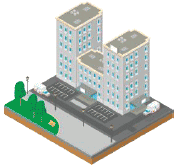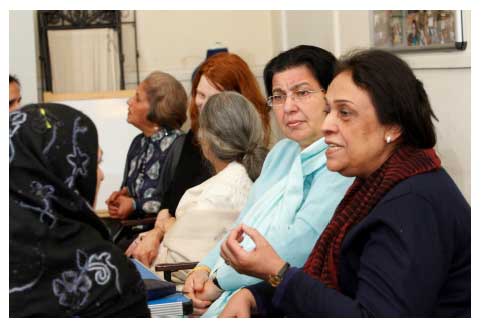Reshaping Care For Older People - Update Paper
An update of the progress made in the first two years of the Reshaping Care for Older People Programme
2. VISION
2.1 Why are we Reshaping Care?
Over the next ten years, the demand for health and social care support and services and the circumstances in which it will be delivered, will be radically different. The proportion of over 75 year olds in Scotland, who are the highest users of services, will increase by over 25%. By 2033 the number of people over 75 years old is likely to increase by almost 60%. There will also be changes to the profile of the workforce and a 'deficit' in the number of unpaid carers.
Preventative and community based services

- Promotion of health and wellbeing
- Care and support at home
- Support at times of change
- Support to carers
Hospital and long stay care

- Emergency admissions to hospital
- Long term hospital and residential care
There will be a continuing shift in the pattern of disease toward long term conditions, particularly with growing numbers of older people with multiple conditions and complex needs such as dementia.
2.2 How will Care and Support Change?
The short answer to this is that there will be a move away from an over-reliance on traditional 'institutional' care towards care and support in the home or a community setting that is designed around the needs of the individual.
The shift will require a shift in the balance of resources, so that we are spending more money on the measures that can prevent someone needing to go into a hospital or care home, rather than what has happened in the past, where we spend money on expensive hospital or care home services to look after people whose situation could have been avoided or delayed.
We recognise that this type of shift in the balance of care will mean that difficult decisions will have to be taken about the type of services that will be available to older people. That is why we are investing heavily in ensuring that the fledgling health and social care partnerships develop the right commissioning skills, to ensure that the service and support options that are in place locally reflect the population need. And that is why as we move forward with reshaping care we want to continue an open dialogue with the public - to ensure that the difficult decisions that have to be made about spending more money on prevention and less on long-term and hospital based care are supported and understood.
2.3 What is our Vision?
We need to reduce the number of older people admitted to institutional care for long periods when a package of assessment, treatment and rehabilitation and support in the community - or more support for their carers - could serve their needs much better and maintain their independence. Preventative and anticipatory care will therefore need to be at the centre of all service planning and delivery.
The health and social care workforce will be in a relationship of co-production with service users and communities, something that was explicitly stated in the Christie Report: "the workforce must be able to provide effective services and support that are designed with and for people and communities and not delivered top down for administrative convenience."
Population trends suggest that more people will live alone and as such housing and residential arrangements will evolve to ensure tailored support and effective social connection.
There will be an increasing number of people who will have self-directed support. We must be able to develop greater levels of choice and control for the individual and develop a strong focus on individual human rights. This will mean more flexible and integrated packages of care and support built around family circumstances, working in new ways with carers, the third sector and communities.
There will be an increasingly prominent role for self-care, self-management, and the support of healthy lifestyles, and the role of individuals, families, and communities will continue to be the bedrock of the care system.
At the same time, older people - rightly - will have ever higher expectations about the quality, nature, flexibility and experience of care and support throughout their care and support pathway.
We envisage wider connections with the Community Planning infrastructure being made, to ensure that the innovation in health and social care connects to other areas of service important to older people like transport, leisure and community safety
2.4 How is this being supported by our work to date?
In service design terms, the collective learning of what has worked and what hasn't worked to improve the outcomes for our older population is perhaps the most valuable part of the Reshaping Care for Older People Programme. It is the knowledge and confidence that this understanding can bring to local teams that drives innovation in community services and supports development in wider community and locality networks.
Over the last three years Partnerships have been building their capacity and piloting innovative approaches to better support the older population. Some have made more fundamental changes in the way that they plan and deliver support and services to the older population. At this point it is too early to expect a sizeable shift in population-wide indicators across Partnerships as the projects take time to impact and there are critical interdependencies between initiatives with different lead times.

Contact
Email: Alan Martin
There is a problem
Thanks for your feedback